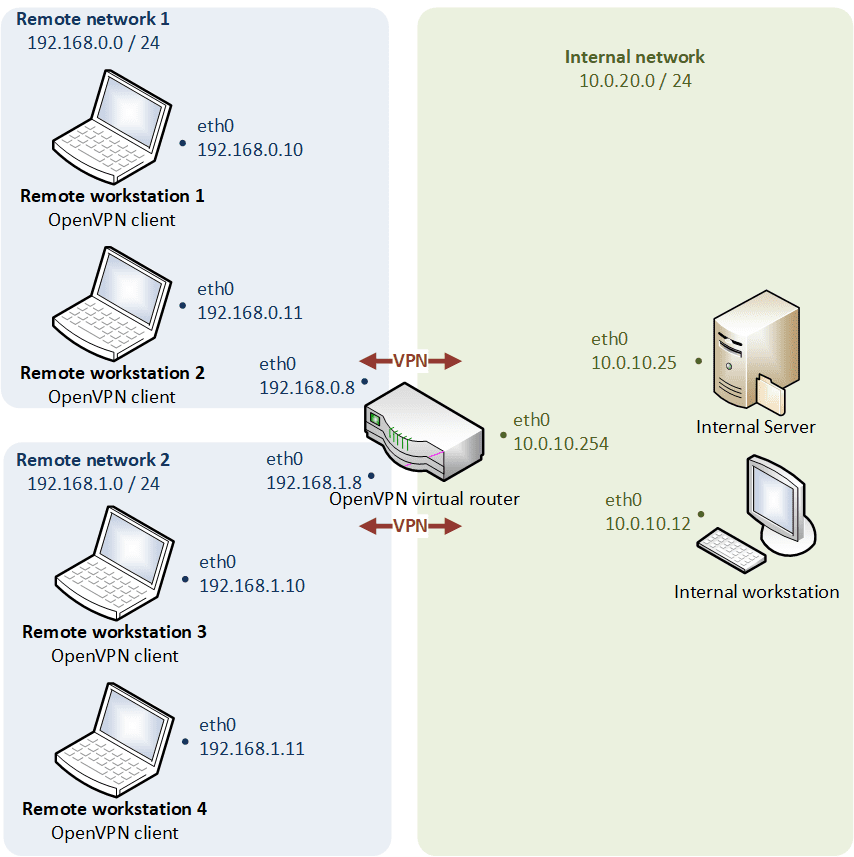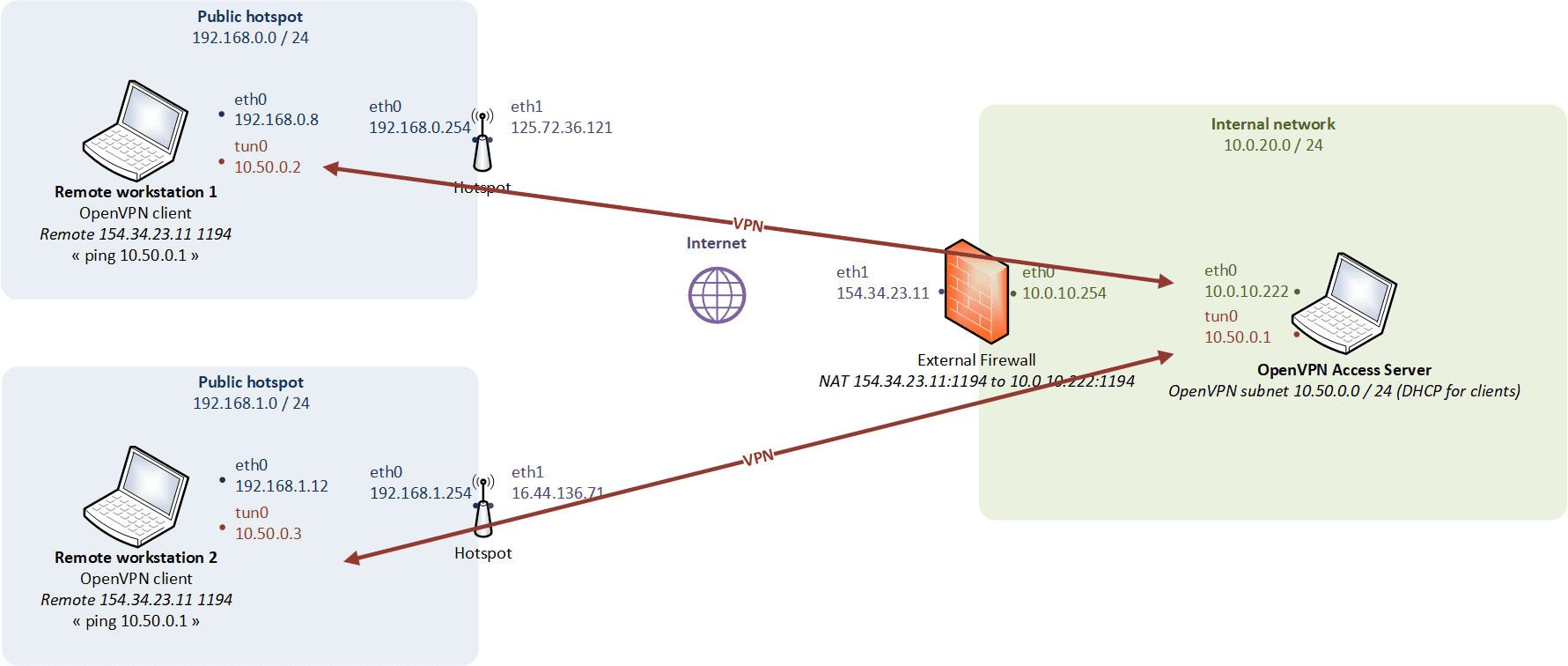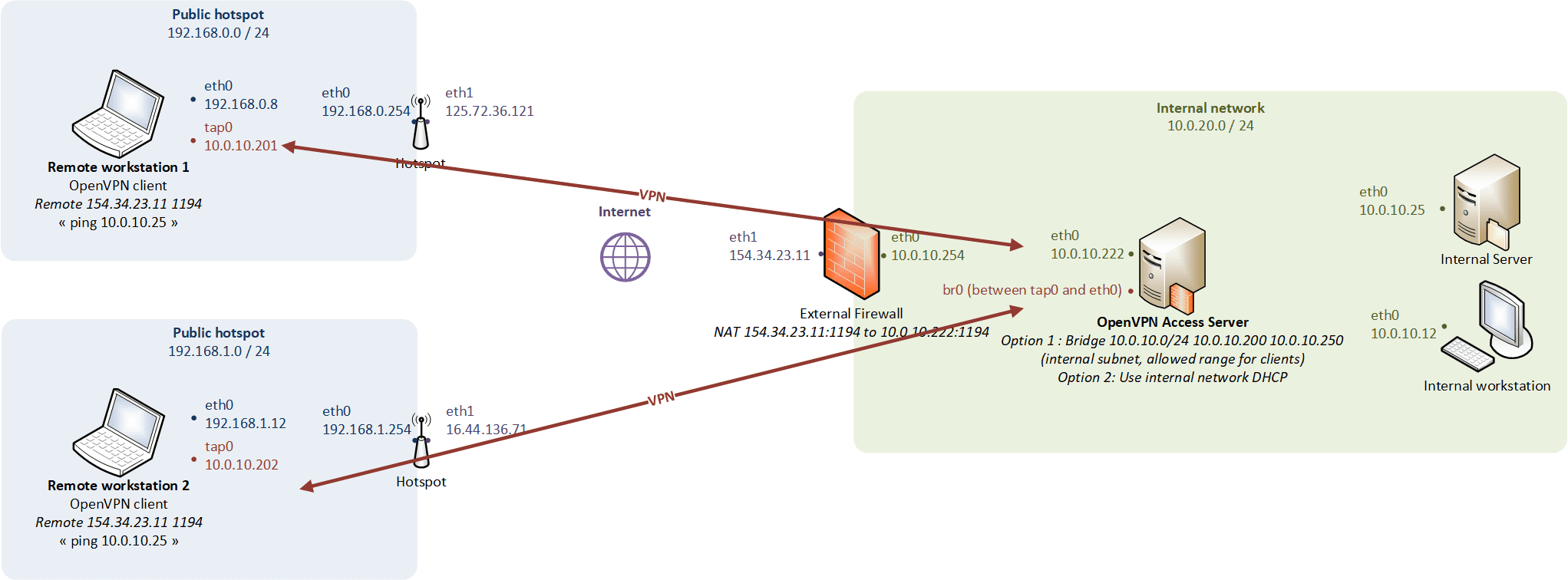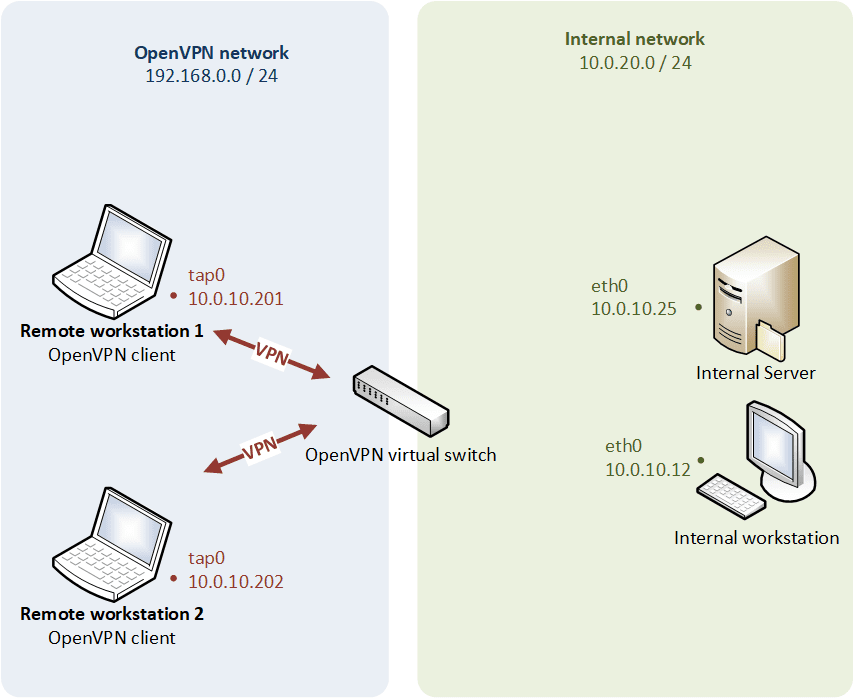OpenVPN
Introduction
When we carry data over an unsecure network, we want to make sure that:
- the data is not altered (on purpose or not),
- the data cannot be read by a third party.
Using a Virtual Private Network (VPN) ensures integrity and confidentiality of the data, as well as client / server mutual authentication. A VPN can be set up in order to secure:
- Network-to-network communications (between main branch and remote office),
- Host-to-network communications (remote user access),
- Host-to-host communications (private chat).
There are two main categories of VPN: TLS VPN and IPsec with ESP VPN.
OpenVPN is an open-source non standardized VPN (not described in any RFC) based on TLS encryption (for authentication and key exchange). It runs in user-land, and works over UDP on port 1194 (or TCP additionally). Therefore, the OpenVPN tunnel is set up above layer 4. It encapsulates the encrypted packet within an IP/UDP segment, which makes it hard to detect. It can transport layer 2 Ethernet frames or layer 3 IP datagrams. In addition to the use of the client certificate, it is possible to ask the client to provide a username and password, and to pass it to the OpenVPN gateway over the secure TLS channel. By default, OpenVPN clients cannot talk one to another.

Routing mode: tunnels L3 IP datagrams
When the client machines connect via routing mode, they use their own separate subnet, and routes are set up on both the client machines and remote gateway so that data will seamlessly traverse the VPN.
- Transports only layer 3 IP datagrams (IPv4 and IPv6),
- The LAN and the VPN clients do not belong to the same broadcast domain (broadcast traffic is not transported),
- The TUN device is a virtual point-to-point IP link (allow IP forwarding on the OpenVPN gateway).
Network-to-network routing mode
Physical modelling

Logical modelling

Host-to-network routing mode
Physical modelling

Logical modelling

Host-to-host routing mode
Physical modelling

Logical modelling

Bridging mode: tunnels layer 2 Ethernet frames
When the client machine connects via bridging mode, they are assigned an IP address that is part of the remote physical ethernet subnet, and are then able to interact with other machines on the remote subnet as if they were connected locally.
- Transports any network protocol (IPv4 as in the example, Netalk, IPX…). Ethernet frames are passed over the VPN tunnel (useful for running applications which rely on network broadcasts such as LAN games),
- The LAN and the VPN clients belong to the same broadcast domain (e.g., required for getting an IP address from a DHCP server on the LAN),
- The TAP device is a virtual ethernet adapter (promiscuous mode on the OpenVPN gateway).
Host-to-network bridging mode
Physical modelling

Logical modelling

Note: Based on original learning material from OpenVPN documentation.